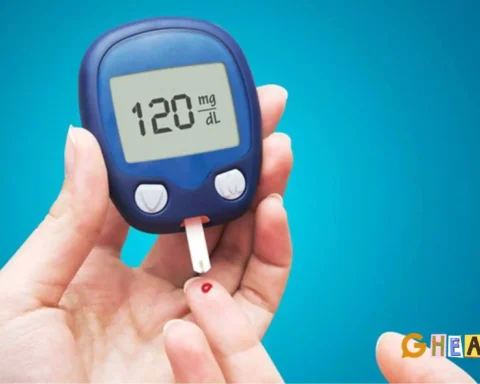Though awareness of Parkinson's disease is lower, those who know about it are mostly ridden with anxiety. Thankfully, Parkinson's yoga therapy is a solution that is widely accepted.
We provide the details in this article. You can understand the symptoms and the types of yoga asanas (poses) that help treat the disease. Complementary and alternative medicine approaches will also be discussed.
Table of Contents
Parkinson's Disease and Symptoms
Parkinson's disease is a progressive neurological condition that affects the nervous system of people and the body's movements. Common symptoms include tremors, stiffness, and slowed movement (bradykinesia). Physical medicine and surgery can help manage the progressive symptoms. The alternative method is to treat the symptoms with yoga.
Listen To This Podcast: Fighting the Stigma around Parkinson’s with Sanjeev Dixit
Yoga Therapy Program
Yoga is a holistic system from ancient India that combines physical postures, pranayama (breath control), meditation, and ethical principles to unite the body, mind, and spirit for overall well-being and spiritual growth. Additionally, through this ancient practice, tight muscles will loosen up. Studies have shown the efficacy of yoga as an alternative therapy for this neurological condition. Due to its multi-faceted nature, the disease requires a multi-pronged approach to treatment.
Parkinson's Yoga Therapy
The right yoga therapist should be consulted to achieve a better balance for the body. Functional mobility is enhanced by appropriate yoga training. By following the correct form of yoga practice, muscle strength improves. Complementary therapies in medicine, such as yoga, have become more mainstream than before.
Yoga Poses and Sessions
Here is a simple yoga exercise session designed for individuals with Parkinson's disease. Before starting this or any new exercise regimen, please consult with your healthcare provider.
Warm-Up
Seated Cat-Cow Stretch: Sit on the edge of a chair, feet flat on the floor. On the inhale, arch your spine and roll your shoulders down and back, bringing your shoulder blades onto your back (this is the cow position). On the exhale, round your spine, drop your chin to your chest, and let the shoulder and head come forward (this is the cat position). Repeat this sequence for 5–10 breaths.
Main Session
Mountain Pose (Tadasana): Stand tall with your feet hip-width apart, press your weight evenly across both feet, engage your leg muscles and core, relax your arms by your sides, and take deep breaths.
Tree Pose (Vrikshasana): Stand in Mountain Pose, bend your right knee, then reach down and clasp your right inner ankle. Use your hand to draw your right foot alongside your inner left thigh. Rest your hands on your hips and lengthen your tailbone toward the floor. Repeat on the other side.
Warrior II (Virabhadrasana II): From Mountain Pose, step one foot back and turn your foot out 90 degrees. Extend your arms out to the sides and bend your front knee. Look out over your front hand. Repeat on the other side.
Cool Down
Legs-Up-the-Wall (Viparita Karani): Sit close to a wall, lie back on the ground, and then extend your legs up the wall. Let your arms rest by your sides, palms facing up. Breathe gently, holding the pose for 5–10 minutes.
Corpse Pose (Savasana): Lie on your back with your legs straight and arms at your sides. Rest your hands about six inches away from your body with your palms up. Let your feet drop open. Close your eyes. Stay in Savasana for 5–10 minutes.
It's crucial to listen to your body and only engage in poses that feel comfortable. Adjusting or skipping poses if necessary is acceptable.
You Might Be Interested In: Acute Parkinsonism: 5 Early Warning Signs You Shouldn’t Ignore
Other Yoga Poses for Parkinson's
Yoga poses are many. Each one has an impact on one or more organs of the body. The following are beneficial to reduce the ill effects of Parkinson's disease:
Chair Pose (Utkatasana): This posture helps to strengthen the core and improve posture, which can be beneficial in addressing the common issues of rounded shoulders and forward head posture associated with Parkinson's disease.
Boat Pose (Modified Navasana): Another posture that strengthens the core and can enhance posture for those with Parkinson's disease.
Locust Pose (Salabhasana): Different versions of this posture can also help address the rounded shoulders and forward head commonly seen in Parkinson's disease.
Downward-Facing Dog Pose (Adho Mukha Svanasana): This pose should be practised to improve strength, flexibility, and balance.
Child's Pose (Balasana): Child's Pose is a yoga posture where the practitioner kneels on the mat, sits back on the heels and lowers the torso forward. This calming pose stretches the lower back, hips, thighs, and ankles, promoting relaxation and tension release. It is often used between intense poses for stress relief, fatigue reduction, and mild back pain relief.
Reclining Bound Angle (Supta Baddha Konasana): Reclining Bound Angle Pose is a restorative posture in which the back is positioned with the soles of the feet touching and the knees dropped out to the sides. This position promotes relaxation and flexibility in the hips, groin, and inner thighs.
Although lateral stretches are part of yoga, they are not the same as the practice itself. Beyond simple stretching, yoga incorporates breathwork, meditation, mindfulness, and other practices aimed at holistic well-being.
These yoga poses enhance balance, body posture, mobility, flexibility, and strength in individuals with Parkinson's disease. They focus on particular muscle groups, relieving tremors, sciatic pain, and stress.
Benefits of Parkinson's Yoga Therapy
Yoga offers many physical, mental, and emotional benefits that contribute to overall well-being. Some key advantages are improved flexibility, increased strength, enhanced mental health, better posture and balance, increased energy levels, anxiety reduction, better sleep quality, enhanced respiratory function, support of heart health, and boost of the immune system. The holistic effects of yoga enhance well-being, both physical and mental. These include body awareness and a reduction in depressive symptoms.
Yoga Training
Yoga can be beneficial for individuals with Parkinson's disease. Here's why:
Physical Benefits: Yoga can lessen motor symptoms like tremors and promote functional mobility and postural stability. It can assist with controllable bodily functions, like breathing. Yoga improves lower-extremity functions, balance, and muscle mobility.
Benefits for the Mind and Social Life: Yoga can also enhance a Parkinson's patient's general quality of life through mindful meditation.
Beneficial Types of Yoga Therapy: Because yoga encompasses many poses, it is generally accessible as a therapeutic modality. Seated and assisted postures are usually involved in the most beneficial exercises. Adding rhythm and music to yoga poses could also be advantageous.
Remember, listening to your body and doing what feels comfortable is essential. Modifying poses or skipping them is okay if they don't work for you. Consider seeking guidance from an instructor experienced in working with Parkinson's patients to ensure the poses are done correctly and safely.
ALSO READ: Parkinson’s Gene Therapy: A Promising Hope for 9 Million Patients
Studies and Complementary Therapy
Several eligible studies have been conducted to analyse and understand the various aspects of PD. Some of the study selections are:
- A pilot study evaluated the efficacy of therapy in teaching oral hygiene and toothbrushing skills to Parkinson's disease patients, finding that yoga practice significantly enhanced toothbrushing and oral hygiene.
- Yoga has been found to improve emotional well-being and overall quality of life in individuals with Parkinson's disease. Both yoga and physiotherapy have shown promise in reducing motor and neuropsychiatric active symptoms to achieve balance in people's lives.
- Feasibility studies have shown another way to treat Parkinson's disease is through integrative and complementary medicine practices, such as acupuncture. Other practices, such as dietary supplements and alternative medicines, require more study.
- Previous yoga studies on motor status analysed the impact on individuals' oxidative stress and motor function. Improving motor function, balance, and functional mobility and reducing symptoms of anxiety and depression were the results.
Tips for Practice
Through adherence to these guidelines and collaboration with a certified instructor skilled in Parkinson's disease management, people can successfully integrate yoga into their wellness routine to augment mobility, mitigate symptoms, and elevate their overall quality of life.
Seated Yoga Poses: To improve stability and lower your chance of falling, start with comfortable positions such as seated yoga poses. Slowly but surely, uncontrolled, vigorous movements can be curtailed.
Concentrate on Breathing: Incorporate breathing exercises into your practice to increase mindfulness and manage tremors. Breathing deeply and rhythmically helps ease tension and encourage relaxation.
Adapt Poses: Adjust yoga intervention to your level of mobility and any other restrictions. Use props like blocks or straps to assist with balance function and alignment during poses like Warrior II.
Yoga International
Yoga International is an online platform that offers a wide range of resources and services, including online classes and deep insights into the ancient practice of yoga. Its membership plans give access to a vast library of on-demand practices led by top teachers and a free digital practice journal. Yoga International is an award-winning streaming media organisation with a strong social media presence, aiming to inspire people worldwide to practice yoga and embark on a journey of personal healing.
International Journal of Yoga Therapy
The International Journal of Yoga Therapy (IJYT) is a peer-reviewed publication that covers a wide range of topics related to yoga therapy, including research articles, case studies, reviews, and theoretical papers. The journal is indexed in Medline, indicating its credibility and recognition within the academic community. Articles published on IJYT undergo a rigorous peer-review to ensure quality and validity. IJYT caters to yoga therapists, teachers, practitioners, and healthcare professionals interested in the therapeutic applications of yoga. It is published annually, with some articles available through open access for broader accessibility.
Listen To This Podcast: Fighting the Stigma around Parkinson’s with Sanjeev Dixit
Conclusion
Parkinson's yoga therapy shows promising outcomes in managing neurodegenerative disease symptoms, improving motor function, balance, and mobility, and reducing anxiety, making it a beneficial adjunctive approach to conventional treatments.
Consult a healthcare provider before starting any new exercise regimen, as the type depends on your symptoms and challenges. Regular exercise is crucial; hiring a physical therapist with experience working with Parkinson's patients is essential for proper pose execution.
Enjoy your yoga session, as it is meditative. Make sure to use it as a healing modality for functional outcomes!
FAQs
Does motor function improve with yoga therapy practice?
Yoga has shown promise in improving motor function, balance, gait, posture, and strength in individuals with Parkinson's disease. The interventions have been linked to functional improvements, reduced rigidity, increased flexibility, and overall therapeutic effects in PD patients.
Do I need a yoga teacher to guide me?
While having a yoga teacher who has experience with Parkinson's disease is beneficial, personalised instruction can also be preferred. Yoga poses and techniques can be adapted for Parkinson's, but a knowledgeable teacher ensures effective modifications and safety. An experienced guide can also teach you how to use yoga props effectively.
Which meditation techniques are to be followed to treat Parkinson's disease?
Meditation techniques such as mindfulness and relaxation can help manage non-motor symptoms like anxiety and depression in Parkinson's disease. Mindfulness training and practices like massage, yoga, and Tai Chi can improve patients' overall well-being and quality of life.
What is movement disorder in Parkinson's disease?
Parkinson's disease is characterised by movement disorders such as slowness in movement (bradykinesia), involuntary shaking movements (tremors), muscle stiffness (rigidity), and difficulties with balance (postural instability).











[…] this blog, we will explore simple Parkinson's disease care plan options to enable you and your loved ones to manage the disease and promote better […]
[…] this does not imply that the 2 medical conditions are the same. Let us compare Parkinson's disease vs multiple sclerosis now and look at the key differences between both […]
[…] suggest a potential association between the gut and the brain. This research is paramount to Parkinson's disease patients since previous studies have observed gut issues as being a common complaint prior to the […]